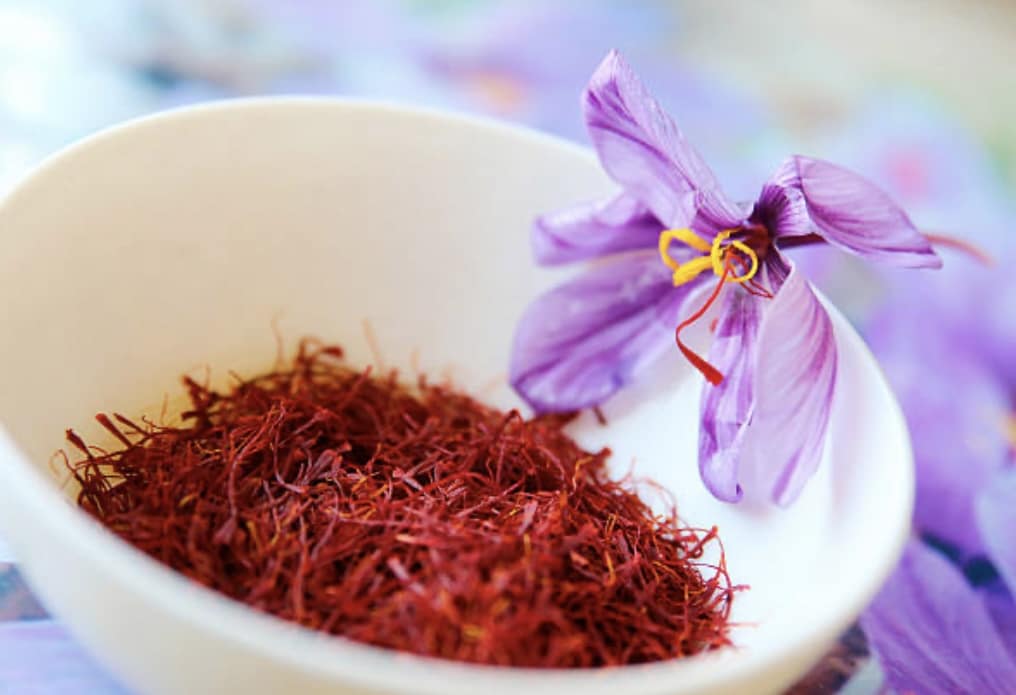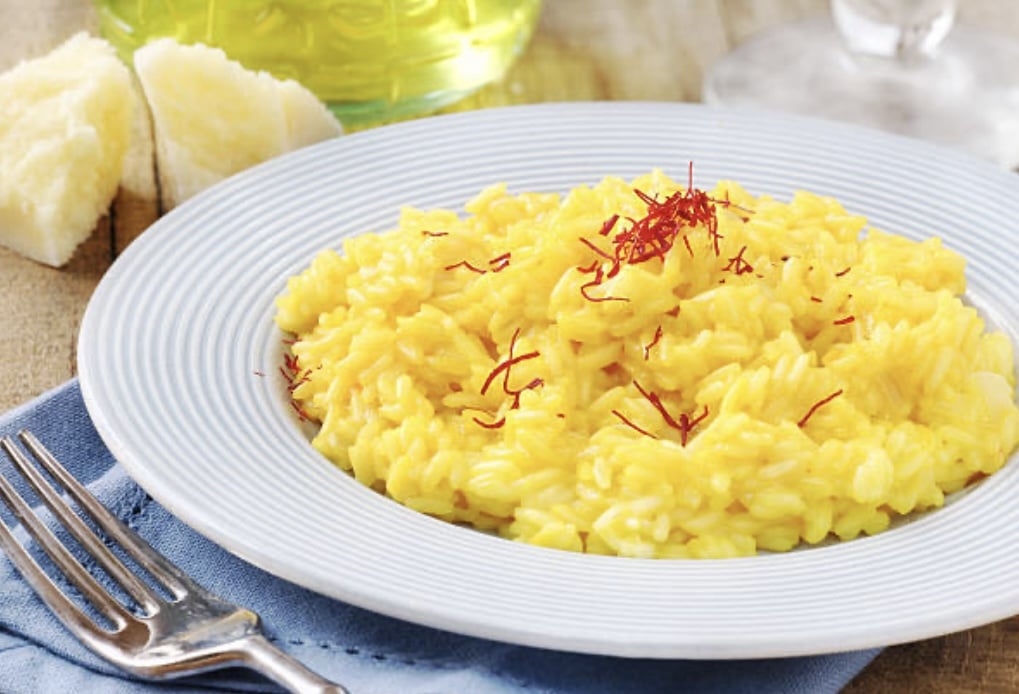In kitchens across Italy, you will find a prized element that glimmers and shines, so much in fact, that it is often referred to as gold. That precious commodity is zafferano or saffron. Saffron is not a plant, but a spice that is made from the stigmas of the crocus flower.

The word saffron comes from the Arabic Za’feràn or “sahafaran” in Persian, meaning “of a golden stigma” and has long been associated with magic and love. The flowers themselves represent rebirth, joy, innocence, and new beginnings. Saffron is also a symbol of youthfulness as it is the first flower to bloom in the spring. In ancient Rome, the crocus was a symbol of love (it is said that the Romans would sprinkle saffron on the beds of newlyweds).
While it is widely recognized as a coveted culinary ingredient, it was first used as fabric dye, painting colour, cosmetic and even as a medicine (it has a number of health benefits). It was highly sought after as bargaining merchandise, used even as a substitute for money and exchanged with gemstones in some instances.
Saffron originated in Asia Minor but was brought to the peninsula by the Phoenicians and has become a treasure of Italian cuisine. It is cultivated in six different regions: Sardegna, Toscana, Umbria, Emilia Romagna, Liguria, and Abruzzo. It is in this last region of Abruzzo where we find the most sought after saffron, L’Aquila. It is one of most coveted strains of the spice, with a pungent and strong aroma and a vivid and vibrant colour that is unmatched in terms of quality. These distinct attributes have garnered the threads from Abruzzo a DOP (protected designation of origin) certification and the name “Oro Rosso” (Red Gold). These accolades have also made the saffron as precious and lucrative as gold.
Approximately 50,000 crocus flowers must be harvested, by hand, to produce a single pound of zafferano. The harvest takes place in the early hours of the morning when the crocus petals remain closed (making the flowers easier to pick and protecting their precious interiors). The blooms are then delicately placed in baskets. Hours after picking, the three tiny interior threads of the crocus are gently plucked. This is a process that requires hours of skilled and patient hands. In the evening hours, the bright stigmas are dried in wire baskets over an open wood fire. This process is what creates the depth of flavour and colour in the saffron.
It is this laborious practice (for such a small yield) that contributes to the staggering price of saffron, nearly $2000 per pound. Fortunately, a little goes a long way when cooking with the brilliant spice, a few threads of saffron will impart its flavour and fragrance to food and beverages.
When buying zafferano it is important to look for the words “superior,” “sargol,” or “coupé,” these denote the highest quality, ensuring you will get the most aroma and flavour from the spice. Furthermore, always look for the DOP certification to assure its Abruzzese origin. The Consortium for the preservation of L’Aquila saffron was formed to monitor and ensure the production standards of their Oro Rosso as well as promote its high quality and use.
Saffron is an ingredient that will truly set a dish apart, one need only think about the golden hue of a risotto alla Milanese as an example of this. Aside from the classic northern primo (first course), the precious spice is used in a myriad of ways across Italy. Among the most popular Italian recipes: fish fillets in a saffron sauce, soup with saffron, saffron infused pasta dough and various breads, cakes, and desserts.

In Abruzzo, it is traditionally used for lamb ribs, in Sardegna gnocchi known as malloreddus are made with saffron. Sicilian arancini are rendered golden with zafferano while in Liguria it is used in a bread with Taggiasche olives, and the fish soup found in Le Marche uses saffron for its red colouring in place of the more traditional tomato found in other recipes. It has also been used for jellies, cakes, gelato, and liqueurs (the famed Strega liqueur gets its distinct yellow colour from saffron).
The best ways to utilize the precious threads are to either place them in a bowl with warm water or broth and steep them before adding to stocks, or to crush them in a small bag and adding as powdered spice to finish a cooked dish.
Italian saffron adds a richness and refinement to each dish in which it is used making it as treasured as gold.



Add a comment